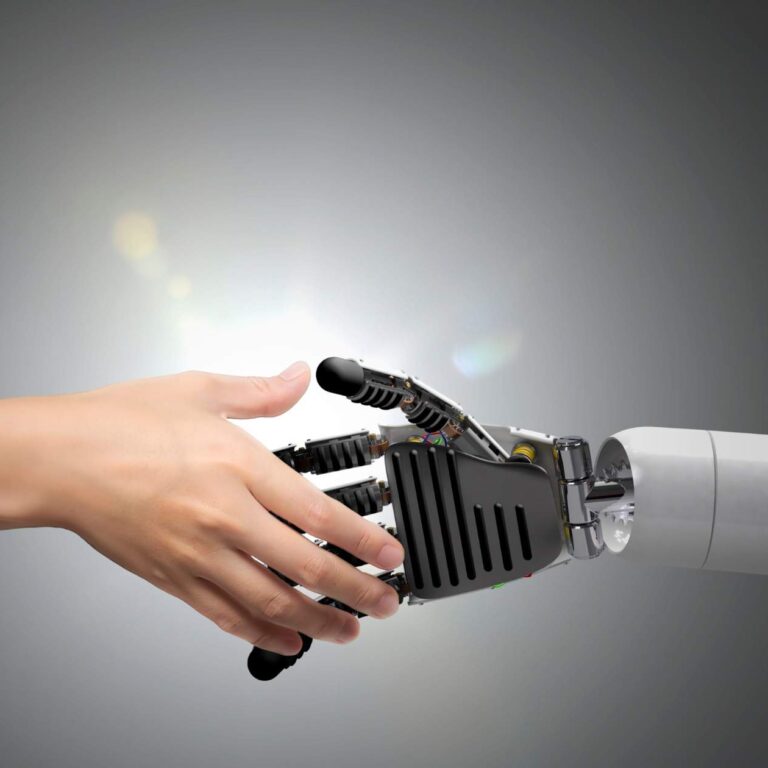Extended Reality : Advanced human computer interaction
Extended Reality
What is Extended Reality?
Extended Reality (XR) can be seen as a superset encapsulating all the computer generated graphics such as Augmented Reality (AR), Virtual Reality (VR) and Mixed Reality (MR). These are virtual environments for an advanced human computer interaction. Extended reality takes us from real world to an entire virtual world. Extended reality is a rapid growing field due to the continuous developments in human computer interactions.
Multisensory extended reality
Multisensory extended reality is a version of extended reality technology which includes the five senses namely- vision, smell, hearing, taste and touch. All these senses are considered while designing multisensory extended reality. Vision involves light striking the retina, smell involves odour fragments, and hearing is indicated by pressure waves. Multisensory experiences have elements of neuromorphic engineering which is a form of limbic system health technology including body movements.
Technologies used in Extended Reality:
To understand how Extended Reality works, we need to understand the technologies comprising it. These have been elaborated below:
1. Augmented Reality (AR):The concept is that the computer-generated objects are merged with real world objects. Illusion is created for the user which can be seen only through digital gadgets. These gadgets might include AR glasses, screens, tablets, and smartphones which work by enhancing animations. Even though the user is working in virtual environment, they still have an access to the real world. Snapchat filters are an example of augmented reality which is used by social media users.
2. Virtual Reality (VR): In virtual reality, users enter into a complete virtual environment which is different from real world. Objects in virtual environment are generated using computer graphics and artificial intelligence. But for using virtual reality, the users are required to wear gadgets specially designed for entering virtual environment. It is mostly used in entertainment and gaming.
3. Mixed Reality (MR): Mixed reality is a combination of augmented reality and virtual reality. In mixed reality the user can interact with virtual environment as well as the real world at the same time. Specialized gadgets are designed for using mixed reality environment. These devices are more powerful than VR devices.
Difference between AR and VR
Let us understand this using an example. ‘Pokemon Go’ is a video game that was developed by Game Freak and published by Nintendo under Pokemon media franchise. Pokemons are creatures of different shapes and sizes who live in forest and along with their human partners. The game lets us create an avatar that can catch, train, trade and battle Pokemon with other creatures.
Augmented reality superimposes virtual information over real world. Pokemon Go is developed using augmented reality. To play this game, the user can make the use of AR apps or smartphones designed to experience virtual environment.
If we develop ‘Pokemon Go’ using virtual reality, then the user can experience himself inside the game. It gives real world experience to the user and can be perceived as real world. The user playing this game can actually move around inside the game. A specially designed gadget such as VR headset and a VR play station can be used for entering Virtual Reality.
Drawbacks of Extended Reality:
Design
Designing the environment for extended reality is one of the major challenges as it involves various devices, technologies and software. To manage all the connected devices, a hardware system is required. Hence a hardware is designed which suits all the technologies such that the virtual environment works smoothly without any interruptions. Interruptions or unwanted noise degrades the quality of virtual environment. Hence the hardware is designed in such a way that it has high robustness to rectify any errors as soon as possible and process information rapidly.
Expensive
Another challenge for designing extended reality is cost of implementation. Developing extended reality environment includes various software and devices. Since many technologies are working together and many devices are involved, the cost of hardware increases. Increased cost of hardware also affects the manufacturing of components as the number of investors might go down. Sales of the components might also go down.
Confidentiality
Extended reality devices and environment are designed as per client’s requirement. This even involves data that should be confidential to the client as well as the company. Storage of such data requires higher amount of authorization which is again costly.
Five(5) Most Best Applications of Extended Reality : EXTENDED REALITY Into A High Performing Machine
1. Education
Extended reality has its applications in education and training. With the help of extended reality, students can learn while sitting at their homes. Students can also travel virtually around different institutions using extended reality. Concepts are better understood with advanced animations used for teaching. It is also used by many organizations to train their employees in the field of work.
2. Advertisements
Companies use extended reality technology to advertise their products. Customers even get hands on virtual experience of the product even before buying it. One of the best examples for this is online shopping stores. These give freedom to users to try the products available on their websites without physically wearing them. This benefits companies as more customers get attracted by using these services.
3. Social Media
Social media platforms such as Instagram, Snapchat and other platforms make use of augmented reality to engage users on their apps and earn profits. This is done by adding the extension of filters which give a virtual illusion to users. Extended reality is also used in television media.
4. Real Estate
Extended reality is used in real estate to give walkthrough of the house or plot to their clients. Owners can also easily find the potential buyers and can give them a virtual tour of the house that is going to be built. This eliminates the role of a broker to find clients and visit them physically.
5. Retail
In retail business, extended reality is used by retailers to give a virtual experience of products to their users. A customer can try the product before purchasing it. Example for this is IKEA which is a furniture company. It gives freedom to its users to try their furniture using augmented reality in their smartphones. Another example for this is Lenskart which is a store for eye wearable such as power glasses, sunglasses, lenses, etc. Lenskart uses augmented reality using which the customer can try all the frames and choose the one which suits the best before actually buying it.
Do Read: Digital Twin Technology the era of visualization







